Description
Warfarin: A Deadly Poison
Chemical Name: Warfarin
Chemical Formula: C19H16O4
Molecular Weight: 308.33 g/mol
Origin and History: Warfarin is a synthetic derivative of coumarin, a compound that occurs naturally in plants such as sweet clover. It was originally developed in the 1940s as a rodenticide to control rats and mice, due to its ability to induce fatal bleeding in these pests. However, in 1954, it was discovered that Warfarin could also be used in humans as an anticoagulant to prevent blood clots, strokes, and heart attacks. Its dual role as both a poison and a medicine has made it one of the most interesting chemicals in toxicology and pharmacology.
Mechanism of Action: Warfarin works by inhibiting the enzyme vitamin K epoxide reductase. This enzyme is critical in the recycling of vitamin K, which is necessary for synthesizing several clotting factors (II, VII, IX, and X) in the liver. Without sufficient levels of these clotting factors, the blood’s ability to form clots is significantly impaired. In high doses, this can lead to uncontrolled internal bleeding, which is the primary cause of death in cases of Warfarin poisoning.
Lethal Dose: The lethal dose of Warfarin for humans varies, depending on factors like age, weight, and overall health. However, it is estimated that a dose of 15-30 mg/kg can be fatal. In animals, much lower doses are lethal, which is why Warfarin has been so widely used as a rodenticide.
Symptoms of Poisoning:
- Bleeding gums
- Nosebleeds
- Blood in the urine or stool
- Bruising easily
- Internal bleeding (in severe cases)
- Hemorrhagic shock (in very severe cases)
Time Needed to Kill: The onset of Warfarin poisoning can be slow, with symptoms often taking several days to appear. This is because Warfarin works by depleting the body’s stores of vitamin K-dependent clotting factors, which are not immediately reduced. It may take 1 to 2 days before significant bleeding begins, and several days more for a lethal outcome if untreated.
Detectability in Autopsy: Warfarin is easily detectable in an autopsy. Blood tests can reveal elevated levels of Warfarin, and internal bleeding or hemorrhaging will likely be found in various organs. Additionally, vitamin K levels in the blood may be found to be unusually low.
Antidote and Treatment: The antidote for Warfarin poisoning is vitamin K. Administering vitamin K helps to restore the body’s ability to produce clotting factors, reversing the effects of Warfarin. In cases of severe poisoning, blood transfusions or the administration of clotting factors may also be necessary to control internal bleeding.

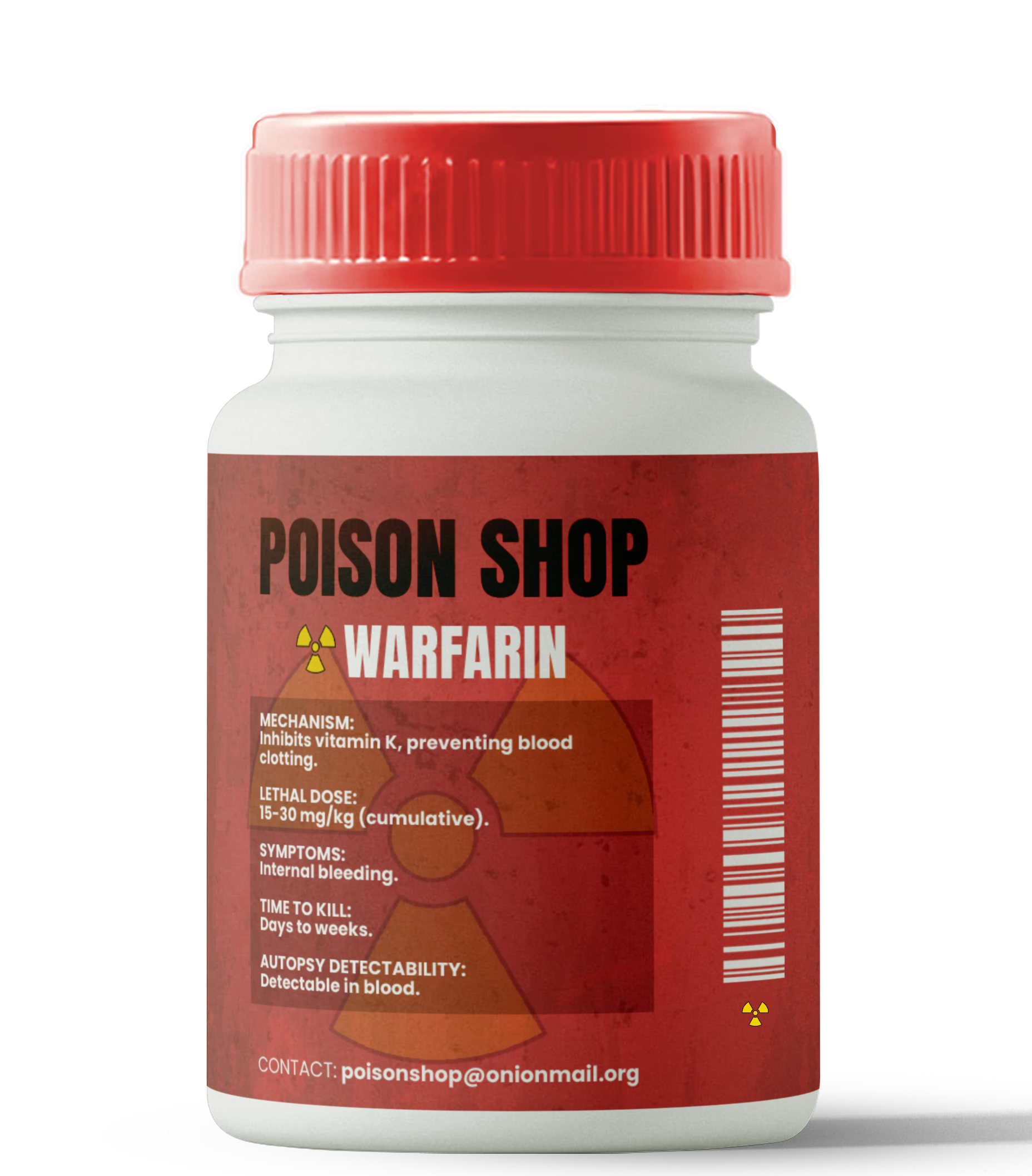
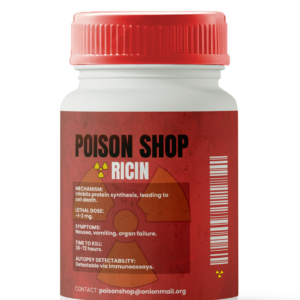
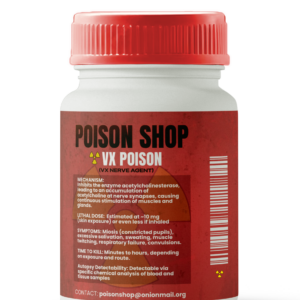
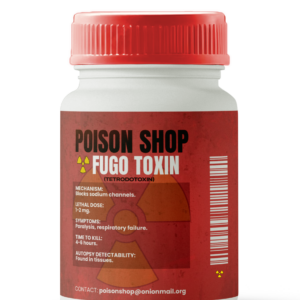
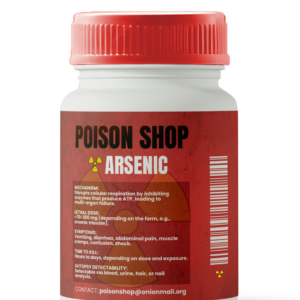
Reviews
There are no reviews yet.